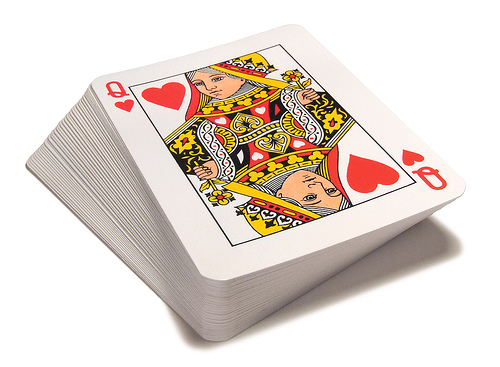
Here’s a card trick devised by Rutgers physicist Martin Kruskal. Give a friend a deck of cards and ask her to follow these instructions:
- Think of a “secret number” from 1 to 10. (Example: 6)
- Shuffle the deck and deal the cards face up one at a time, counting silently as you go.
- When you reach the secret number, note the value of that card and adopt it as your new secret number. Aces count as 1; face cards count as 5. (Example: If the 6th card is a 4, then 4 becomes your new secret number.)
- Continue dealing, counting silently anew from 1 each time you adopt a new number. Remember the last secret card you reach.
That’s it. You just stand there and watch her deal. When she’s finished, you can identify her final secret card in any way you please, preferably through a grotesquely extortionate wager.
You can do this because you’ve simply played along. When she’s dealing, note the value of an early card and then silently follow the same steps that she is. Five times out of six, your “paths” through the deck will intersect and your final secret card will match hers. That’s far from obvious, though; the trick can be baffling if you refuse to explain it.


